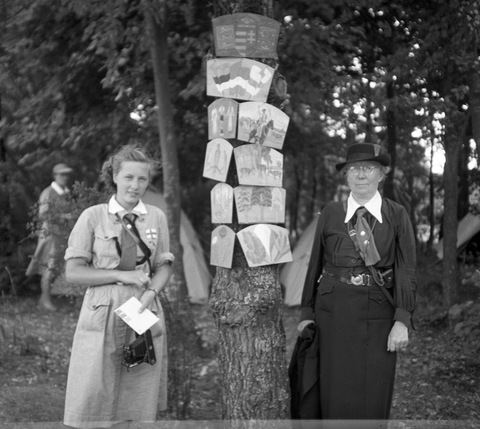Girl Scouts in Hungary in 1930–1931
The first two years of the Cserkészlányok Lapja (Girl Scouts’ Magazine)
DOI:
https://doi.org/10.15170/PAAA.2020.07.02.04%20Keywords:
women's history, scouting, media analysis, Hungarian Girl Scouts’ Association, Girl Scouts’ Magazine, Robert Baden-Powell, Antónia LindenmeyerAbstract
The scout movement founded by Robert Baden-Powell has spread worldwide and become the most significant youth movement of the 20th century. Baden-Powell had intentionally founded Scouting only for boys, however, with the girls’ quickly manifesting interest he also founded Girls’ Scouting with his younger sister. Although the main goals – to bring up a young person of character with healthy mind and body were the same – as well as the scouting law and the pedagogical methods were also highly similar, Baden-Powell favoured having the boys and the girls in separate organization forms referring to the different mental and physical development and functions of the two genders. In Hungary, the first girl scout teams were established after WW1, and their national association was founded in 1924.
In our research we are studying the national history of girl scouting, especially through the analysis of the central magazine of the association, called Cserkészlányok Lapja (Girl Scouts’ Magazine). A whole year of the magazine is discussed (from December 1930 until December 1931). Our goal is not only the presentation of the magazine but also providing an insight to the girls’ lives and the work of their association. By using the method of document analysis, we would like to show the mission, the staff and the certain articles and columns of the magazine and thus highlighting some of the fields of scouting. According to our results we can claim that the magazine published the writings of contemporary Hungarian authors and was strongly attached to the publisher, i.e. the Hungarian Girl Scouts’ Association. Despite financial difficulties, it always managed to keep up due to its work in presenting the colourful activities of scouting (e.g. camping, nature walks, cooking, games) accompanied by the propagation of subscription which later became mandatory for the teams.
Photo: Fortepan / Magyar Bálint
Downloads

Downloads
Published
How to Cite
Issue
Section
License

This work is licensed under a Creative Commons Attribution-NonCommercial-NoDerivatives 4.0 International License.

